Kamat or Kamath is a surname from Goa, Maharashtra and coastal Karnataka in India. It is found among Hindus of the Goud Saraswat Brahmin, Saraswat and Rajapur Saraswat Brahmin communities following Madhva Sampradaya of either Gokarna Matha or Kashi Matha.

Sree Venugopla Krishna Swami Devasthan is a Hindu temple located in Chendamangalam, Kerala, India. It was established in 1900 at Chendamangalam, 42 km from Ernakulam, 22 km from Aluva and 5 km from North Paravur.
Gaud Saraswat Brahmins (GSB) are a Hindu Brahmin community, who are part of the larger Saraswat Brahmin community that migrated to Konkan from Gaud, as per the Skanda Purana in ancient India. They belong to the Pancha Gauda Brahmins group.They primarily speak Konkani and its various dialects as their mother tongue.
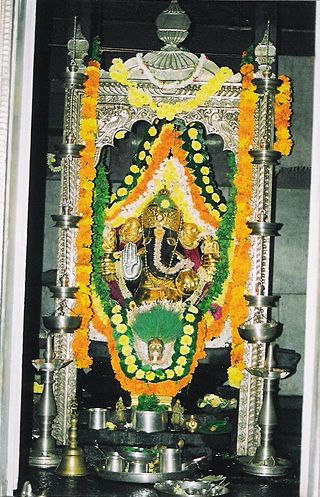
The Shirali Maha Ganapathi Mahammaya Temple is the Kuladevata Temple of the Goud Saraswat Brahmin community. The temple deity is a Kuladev of the Kamaths, Bhats, Puraniks, Prabhus, Joishys, Mallyas, Kudvas and Nayak families from the Goud Saraswat Brahmin community. The temple is located at Shirali in the Uttar Kannada district of Karnataka state. It is a five-minute drive from either Bhatkal or Murdeshwar. The Temple was built about 400 years ago. It was renovated in 1904.

The Ramnathi temple is located in Ramnathim, Bandivade in Goa. Goud Saraswat Brahmins (G.S.B) community, Daivadnya Brahmin and vaishyas are primary worshippers. Similar to other Goan Brahmin temples, Ramnathi too incorporates the system of Panchayatan, therefore, this temple houses 5 main deities namely - Shri Ramnath, Shanteri, Kamakshi, Laxmi Narayan, Ganapati, Betal and Kalbhairav, along with other family purushas.
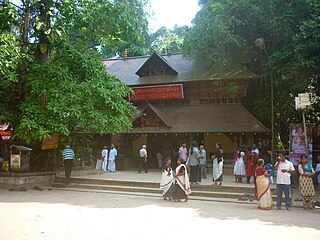
Mannarasala Sree Nagaraja Temple in Haripad is a very ancient and internationally known centre of pilgrimage for the devotees of serpent gods (Nagaraja). The famous Nagaraja temple "Mannarasala" in Haripad is nestled in a forest glade, like most snake temples. The Mannarasala Temple has over 100,000 images of snakes along the paths and among the trees, and is the largest such temple in Kerala, India. Couples seeking fertility come to worship here, and upon the birth of their child come to hold thanksgiving ceremonies here, often bringing new snake images as offerings. A special turmeric paste which is available at the temple is credited with curative powers.
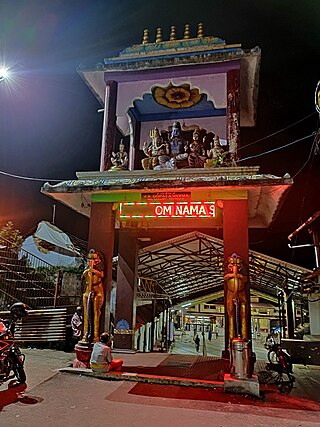
Sri Visalakshi Sametha Sri Viswanatha Swamy temple, popularly known as Kasi Viswanathaswamy Temple or locally as kundukovil is a famous Hindu temple located in the Kalpathy village of Palakkad in Kerala, India. It is the site of the annual Kalpathi Ratholsavam which is one of the most famous temple festivals of Kerala. This ancient temple nestles by the banks of the serene Kalpathy river. Dedicate to Lord Siva and his consort Visalakshi, it dates back to early fifteenth century. The similarity to the Varanasi Kashi Viswanatha temple on the banks of Ganges is responsible for the moniker kasiyil pakuthi kalpathy and the name Dakshina Kashi associated with this temple. The Temple is surrounded by the four Tamil Brahmin agraharams or traditional villages: New Kalpathy, Old Kalpathy, Chathapuram and Govindarajapuram.
Shenoy is a surname from coastal Karnataka and Goa in India. It is found among Hindus of the Goud Saraswat Brahmin community following Smartha Sampradaya of Kavale Matha or Madhva Sampradaya of either Gokarna Matha or Kashi Matha.
Pai is a surname from coastal Karnataka, Kerala and Goa in India. It is found among Hindus of the Goud Saraswat Brahmin community, especially of Madhwa Section following either Kashi Math or Gokarna Matha.
Kerala Iyers, Pattars or Bhattars, are Tamil Brahmins of the Indian state of Kerala — people who were residents in the Kerala region, and also people who migrated from present day Tamil Nadu in different waves from the time of the Chera dynasty. They are Hindus. The community consists of two groups - the Palakkad Iyers and Iyers of the Cochin and Travancore regions.

The population of Kerala, India is a heterogenous group that comprises many ethnic groups that originated in other parts of India as well as the world, with distinctive cultural and religious traditions. While the majority of Keralites speak the Malayalam language, various ethnic groups may speak other languages as well.

Karkala, also known as Karla in Tulu language, is a town and the headquarters of Karkala taluk in the Udupi district of Karnataka, India. Located about 60 km from Mangalore in the Tulu Nadu region of the state, it lies near the foothills of the Western Ghats. Karkala has a number of natural and historical landmarks, and is a major tourist and transit destination due to its strategic location along the way to Hebri, Sringeri, Kalasa, Horanadu, Udupi, Kollur, Subrahmanya and Dharmasthala.
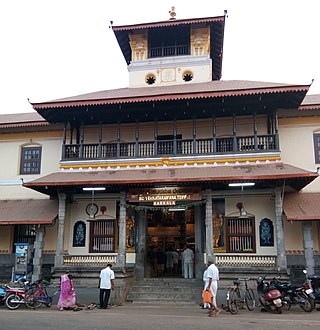
Sri Venkataramana Temple, Karkala, also known as Padutirupathi, is a temple in Karnataka, India. It was built by Goud Saraswat Brahmins of Karkala and was installed on 25 April 1537.
Sree Venu Gopala Swamy Temple, Purakkad is one of the oldest Gowda Saraswath temples in the world. The main deity is Sree Venu Gopala Swamy. Located in the ancient port city of Purakkad, in Alappuzha the temple was built around 400 years back. Gowda Saraswath Brahmin devotees from all over the world bring their children to perform "Devak Deevop" and "Sodovop".
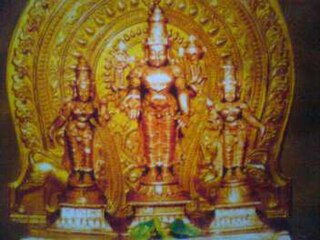
The Sri Laxmi Venkatesh Temple is foremost temple of Gowda Saraswatha Brahmins in and around Kanhangad.

Thuravoor is a gram panchayat in the Pattanakkad Block of Cherthala Taluk of the Alappuzha District, State of Kerala, India. It comes under Aroor Assembly constituency. Thuravoor lies under Kochi UA in future. A four lane(six lane is progressing) National Highway 66 passes through the village, which along with a railway station gives it excellent connectivity with the remainder of the state. Thuravoor is famous for the Narasimha Swamy temple which is dedicated to the fourth incarnation (avatara) of Vishnu, the Narasimha. The temple has two main deities, the Vadakkanappan and the Tekkanappan, which is rare among the temples of Kerala. The new 6 lane elevated highway is from thuravoor to aroor. It is the largest 6 lane elevated highway in the country. Thuravoor is a rapid developing town. It is lies in Aroor Assembly constituency. Thuravoor Kumbalangi road is a main road parallel to NH 66. Thuravoor is the major entry to Kochi city.
Shri Katyayani Baneshwar Temple ,(Sanskrit:श्री क़ात्यायनी बाणेश्व् र मन्दिर), or the Aversa Hindu Narayani is a Hindu temple in the coastal town of Aversa near Ankola, in the Uttara Kannada district of Karnataka. It is around 100 km (62 mi) from Goa, India, 500 km (310 mi) from Bangalore and 136 km from Hubli.
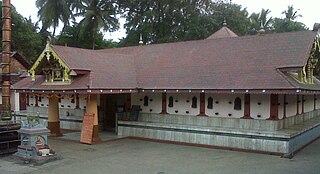
The Sri Lakshmi Narasimha Temple is the foremost temple of Gowda Saraswatha Brahmins in and around Thalassery.

Cochin Tirumala Devaswom, also called Gosripuram is the biggest and most important socio-religious institution of Gowda Saraswat Brahmins of Kerala, India. The temple is situated at Cherlai in the heart of Mattancherry town in Cochin area which is one of the earliest settlements of GSBs in Kerala. The temple was established in the later half of the 16th century. The history of GSBs in Kerala is inter-woven with that of this temple and its Venkateswara idol.

Swapna Saraswata is a collection of short histories by Indian writer Gopalakrishna Pai.













